Many different animals that start with V. Animals are both intriguing and magnificent to watch in their natural habitat. The vulture, a bird of prey that scavenges on carrion with roughly 16 varieties, and the Vampire bat, which is primarily found in Central and South America, are two of the most well-known creatures globally today.
There are many other animal species whose names begin with the letter V to be discovered. Throughout this blog, you will not only become familiar with animals whose names begin with the letter V, but you will also learn about the characteristics that distinguish each of these creatures.
Continue reading to learn more about these animals, some of which you may already be familiar with and others with which you may be unfamiliar. Now, let’s get down to business because I know you’re starting to get a little curious and excited by this point.
List of Animals that Start with V
1. Vampire Bat
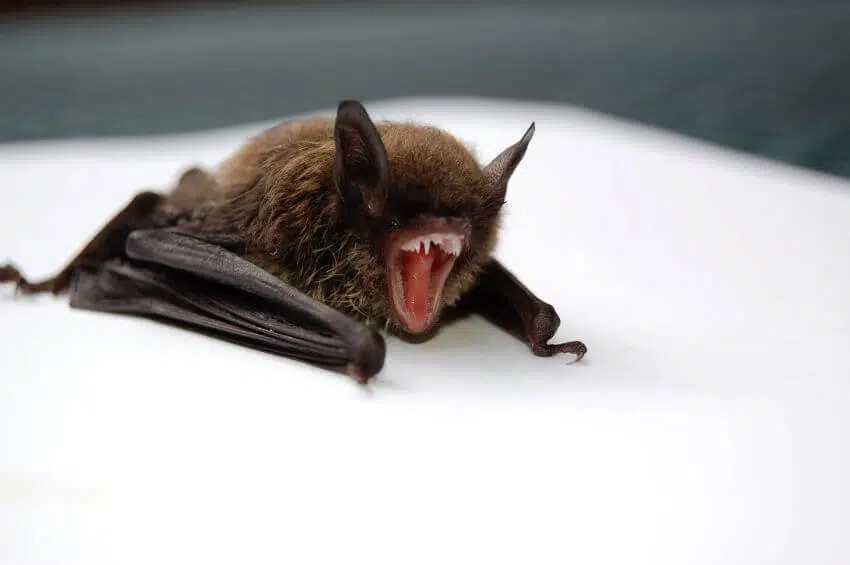
Scientific Name: Desmodontinae
The Vampire Bat is a small bat species native to tropical regions of Central and South America, especially in Mexico. There are three recognized subspecies of Vampire Bat, each classified as a separate genus despite their apparent resemblances to one another.
The three Vampire bat species were the Common Vampire Bat and the Hairy-Legged Vampire Bat. The third species is the White-Winged Vampire Bat. All of these species are closely related and have the same distinctive feeding habits, as they are the only known animals that are entirely dependent on blood for survival.
Vampire bats track down their prey using echolocation, hearing, and smell, which are usually cows, pigs, and the occasional tapir.
Compared to other bats, the Vampire Bat is a relatively little creature, with its body seldomly growing larger than the human thumb size. A finger claw protrudes from the front of the creature’s wings, which it uses for gripping when leaping on about its host.
Its wings are characterized by long, finger-like bones coated in a light skin layer—the predators of these animals that start with V where eagles, hawks, and humans.
See Related: Animals that Start X
2. Vampire Squid
Scientific Name: Vampyroteuthis infernalis
In the deep sea, the vampire squid is a remarkable marine species that survive using bioluminescent organs. Also, it is oxygen metabolism to live and thrive in the ocean when oxygen levels are exceedingly low.
This interesting aquatic animal is a cross between a squid and an octopus in appearance. It is, however, neither of the above. As the name suggests, the vampire squid’s black hue and skin join its numerous limbs, producing an almost cape-like shape.
The bodies of these aquatic critters are gelatinous and range in color from jet black to light reddish. It has eight arms and two tentacles, and these sea critters have the largest eyeballs in the animal kingdom compared to the size of their bodies, making them the world’s largest eyes. The vampire squid only requires nourishment a few times per week.
Its food consists solely of dead planktonic organisms and marine snow, and the principal predators of this animal are whales, huge fish, and sea lions.
See Related: War and the Effect on Wildlife
3. Vancouver Island Marmot
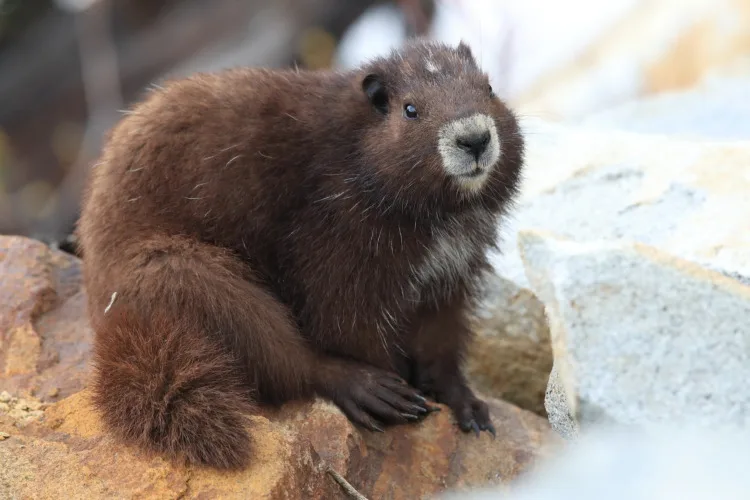
Scientific Name: Marmota vancouverensis
The Vancouver Island Marmot is a fascinating creature found on Vancouver Island and is native to Canada. It is one of only a tiny number of mammals that can be found solely in this country. Sadly, it is also classified as Critically Endangered by the IUCN. It is estimated that there are less than 30 of these creatures left in the wild.
Although this species of Marmot is similar in appearance to other marmot species, on the whole, they can be distinguished by their darker chocolate brown coat and irregular white patches over the snout and chest area.
The average lifespan of a Vancouver Island marmot is ten years, with females usually surviving for a longer period than marmot males.
In subalpine meadows, these species of Marmot feed primarily on grasses and forbs, which they forage for themselves. Because they are herbivores, marmots on Vancouver Island can reinforce dispensing seeds and acts as a pollinator for the diverse range of grass and wildflowers that they eat.
They feed in subalpine meadows, where they collect pollen from various plants and distribute seeds that have been ingested through their excrement. The marmots of Vancouver Island are subject to significant predation, with the majority of their predators being wolves, cougars, and golden eagles.
See Related: Endangered Species in Oklahoma
4. Vanga
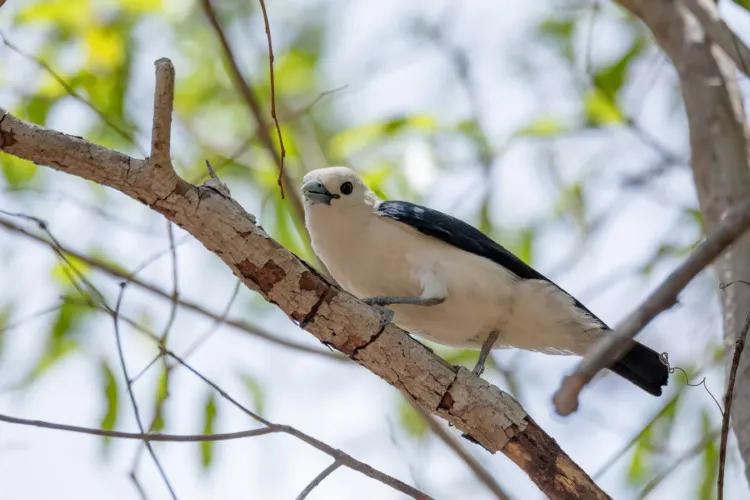
Scientific Name: Vangidae
Vanga, commonly known as the Vanga shrike, is a lovely Madagascan bird seen in the wild. It is one of the creatures whose names begin with the letter V and one of the Madagascan 15 bird species.
This unique bird species can be found in Madagascar’s primary eastern rainforest and western wooded and on the Comoro Islands, where one species is found only locally. It is small to a medium-sized bird that can grow 5 to 13 inches in length and weigh 35 to 300 grams.
Depending on the circumstances, Vanga preys on insects from soils or directs its prey from trunks and huge branches. Drongos, snakes, and brown lemurs were predators that preyed on these little birds in their natural habitat.
See Related: Best Wildlife Conservation Jobs
5. Vaquita
Scientific Name: Phocoena sinus
Vaquita is among the animals that start with V. This marine animal is found only in a limited area near the northern end of the Pacific Ocean, in a region known as the Gulf of California in an area known as the Sea of Cortez. Unfortunately, the population of these cetacean species is tiny, and they believe they’re on the verge of extinction.
It is a marine mammal that features a dorsal fin that is noticeably more significant and more angular than its body. They, like dolphins, as well as other aquatic mammals, must come to the surface to breathe regularly. Vaquitas can grow between 60 and 120 pounds in weight and grow to be between the length of 4 and 5 feet.
Vaquita possesses several world records, including the rarest marine mammal and the shortest native range. It has dark color around the eyes, is a distinguishing characteristic of the animal, and readily identifies them in the wilderness.
This endangered marine mammal’s diet consists primarily of fish, crabs, and squid. Sharks were the most common predators encountered by Vaquita.
See Related: Is a Bird a Consumer? Here’s What to Know
6. Variegated Squirrel
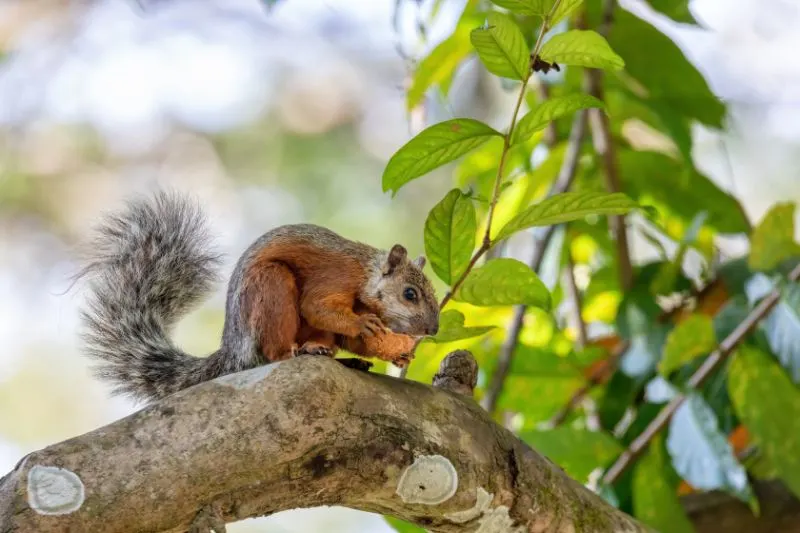
Scientific Name: Sciurus variegatoides
The variegated squirrels are among the animals that start with V. It is a medium-sized tree squirrel whose dorsal coloring ranges from dark brown to yellowish-grey depending on its species. The neck is typically darker than the rest of the body, with a whiter area behind the ears appearing sometimes.
The underparts of a Variegated squirrel are typically a light color of cinnamon.
Solitary and active during the day, variegated squirrels are diurnal. They are rarely seen descending to the ground. Squirrels of this species are herbivores, which means they eat seeds, ingest fruits, and consume some insects.
Variegated squirrels are not now threatened in any significant way because the species is found in large numbers throughout Central America, from Mexico to Guatemala, where it resided. The weasels, foxes, bobcats, and coyotes were the predators that killed and ate these squirrels.
See Related: What is The Hunters’ Role in Wildlife Conservation
7. Velvet Asity
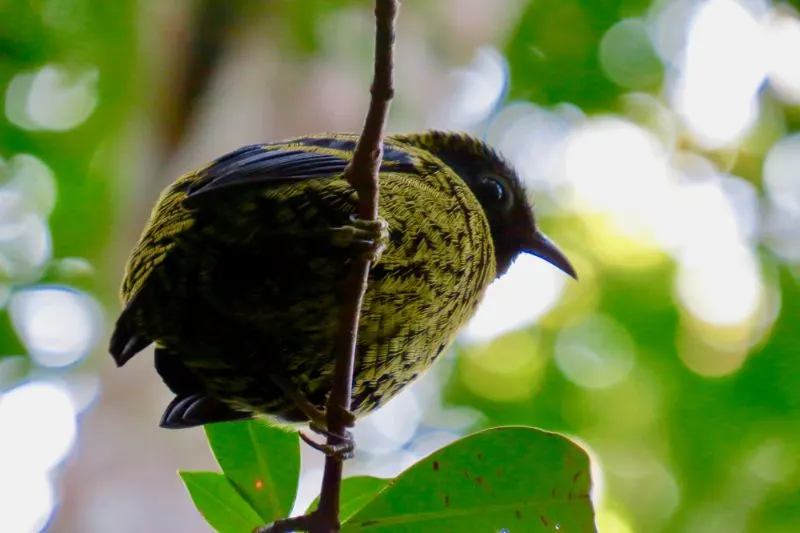
Scientific Name: Philepitta castanea
The Velvet Asity is a species only found in Madagascar and cannot be found anywhere else in the world. It is a visually beautiful bird species with short wings and brightly colored head decorations that contrast with the bird’s black feathers.
The male Velvet Asity is easily distinguishable by its brightly colored head ornaments, brighter, while the female Velvet Asity has a much duller appearance.
As an endemic to Madagascar, this bird can only be found in the rainforest region of eastern Madagascar, where it feeds primarily on tiny fruits and nectar, with some arthropods thrown in for good measure.
As a result of its ability to tolerate degraded habitats and the fact that it is found in protected regions, the Velvet Asity is not considered critically threatened. Larger wild creatures were the primary predators of this remarkable bird species.
See Related: Common Beisa Oryx
8. Verreaux’s Sifaka
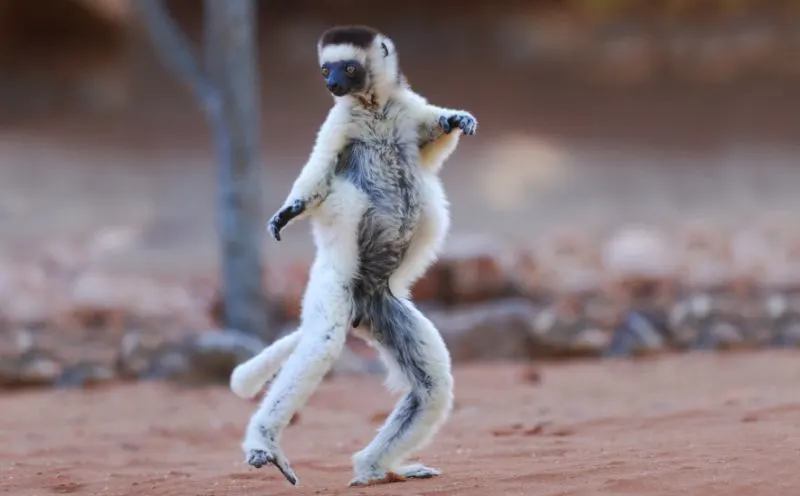
Scientific Name: Propithecus verreauxi
Verreaux’s sifaka, commonly known as the white sifaka, is a medium-sized primate in one of the lemur families. It’s a primate and part of the animals that start with V. It is located in Madagascar’s western and southwestern areas. Also, it can be found in several habitats, ranging from the rainforest of Madagascar’s western part dry forest vegetation and arid forests with thorns.
With white fur and a tinge of yellow, it stands out from the rest of the pack, contrasting with its bald, black face. Verreaux’s sifaka feet and hands are also black. This animal species stands out among the rest with a long tail that can be anywhere from 43 to 56 cm in length and is about the same length as its body.
Verreaux’s sifaka is herbivores that feed on various plant materials such as leaves, wood, fruits, and flowers. Since this primate is a herbivore, it is regarded to be a vital seed disperser. The harrier hawk, fossas, and stray dogs were the primary predators of these social primates.
See Related: Greater Bamboo Lemur
9. Vervet Monkey
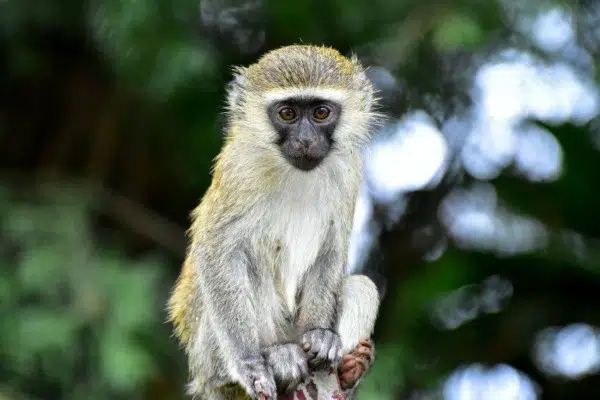
Scientific Name: Chlorocebus pygerythrus
It is a medium to large-sized monkey found predominantly in Eastern Africa, but it can also be found in other parts of the world. This monkey species can grow to a maximum height of 50cm in height and has a significantly longer tail than its body.
Its fur is grey or olive, depending on the species, and has a lighter tone on the underside, making it look like a vervet monkey. The only dark hue on this monkey’s body is the black of his hands, ears, and face, which are the only dark parts of his body.
The majority of the Vervet Monkey’s diet consists of leaves and new shoots, consisting of tree bark, flowers, and fruits. Roots, seeds, inserts, and birds are also among the foods they consume. Leopards, crocodiles, and servals were among the predators that hunted and ate Vervet Monkeys in their natural habitat.
See Related: Are Humans Animals? 15 Things to Know
10. Vicuña
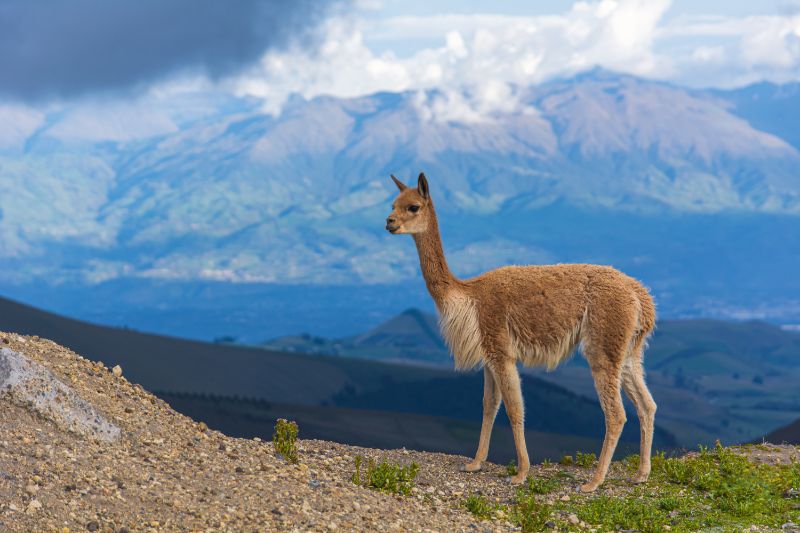
Scientific Name: Vicugna vicugna
South America is one of only two wild camelids that inhabit high alpine sections of the Andes. The other wild camelid is the guanaco, which lives at lower levels in South America. This creature has a slim body with long necks and legs and a long neck and legs.
Vicunas are considered generalists because they ingest over half of the plant species found in the area where they reside. Grass and shrubs were the most common foods on their menu. This animal species has a life expectancy of roughly fifteen to twenty years on average. Pumas are the camelids’ primary predators.
See Related: Amur Leopard
11. Viper
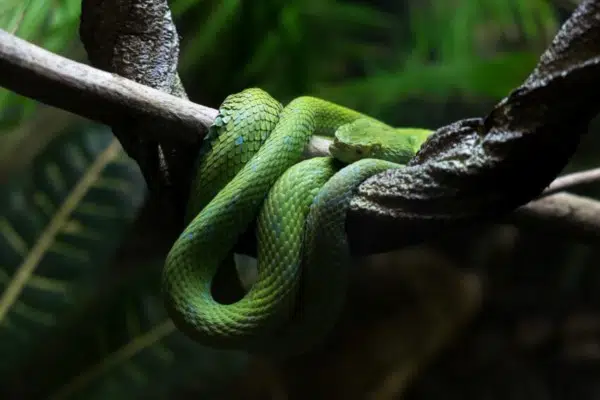
Scientific Name: Viperidae
The Viper (Viperidae) family of poisonous snakes may be found in most regions of the world, apart from Antarctica and Australia, and other remote islands. They all have long, hooked fangs that allow for deep punctures and administer snake venom to the victim.
Vipers are poisonous snakes that are classified into two families. There are more than 200 kinds of poisonous snakes in the world. Unlike other snakes, vipers have a pair of long, flat, venom-injecting fangs, which are linked to moveable bones in the upper jaw and may be folded back into the mouth when not being used.
Vipers can grow to be more than 25 cm in length or as short as 25 cm, depending on the species. They prey on small animals and attack by striking and envenoming their victim, which they then consume.
See Related: Environmental Organizations in Africa
12. Viperfish
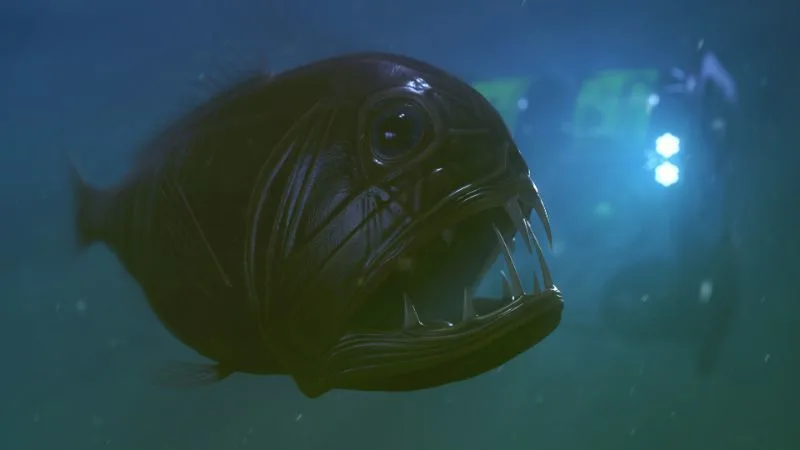
Scientific Name: Chauliodus sloani
The viperfish is one of the animals whose names begin with the letter V. It is a fish with a unique appearance that can be spotted in the deep water. It is also among the most well-known and widely-used species on the planet.
Its big mouth and pointed, fang-like teeth, features make this fish easily distinguished from other species. This is because the fangs are too huge to fit within the mouth. Instead, they curl backward extremely close to the fish’s eyes as if they were trying to protect them.
Viperfish are tiny fish that grow approximately 11 to 12 inches in size, despite their intimidating appearance. In order to capture its prey when hunting in the darkness, the viperfish must use its powerful teeth to grab and hold its prey.
A variety of snakefish has been recorded hanging still in the water, wagging lures above their head like just a fishing pole in an attempt to attract prey.
See Related: Best Posters on Saving Earth
13. Virgin Islands Dwarf Gecko
Scientific Name: Sphaerodactylus parthenopion
It was first identified in 1964 and is believed to live on numerous islands in the British Virgin Islands archipelago. However, because it spends most of its day hidden behind rocks and other objects, this species is elusive and only occasionally observed in the wild by visitors.
It is modest in size, with a length of 0.7 inches and a weight of 0.15 grams, and it is lightweight. The Virgin Islands dwarf gecko loses its skin at regular intervals, just like all other geckos, to maintain optimally healthy skin. Adult geckos shed less often than their younger counterparts. It is also believed that the tail of this gecko species can regenerate if it is torn off while evading a predator.
The diet of this type of gecko species consists primarily of insects, with predators including snakes, birds, and small animals.
See Related: Crowned Eagle
14. Vulture
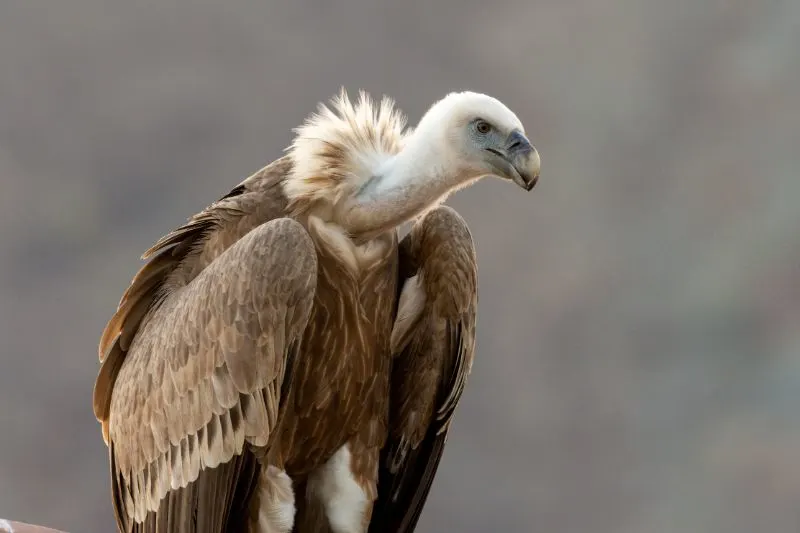
Scientific Name: Cathartes aura
The vulture, which has a frightening appearance, is one of the creatures whose names begin with the letter V.
Although these birds are frequently seen as a nuisance or an omen of death by the general public, they are an essential component of the natural ecology. Vultures are a type of carnivore classified as a scavenger, and they are found all over the world.
These scavenging birds clean up dead animal debris from the environment, containing hazardous bacteria and diseases, by opportunistically feasting on whatever remains from other animals’ kills. But as a result of human activities, many species are experiencing rapid declines throughout the world. This, in turn, may facilitate disease transmission.
Venomous vultures are distinguished by their bald heads, which are one of their most distinguishing characteristics. In Europe, Asia, and Africa, Vultures control a large portion of the territory. These scavengers are prey for hawks, snakes, and wild cats, among others.
FAQs
What are the 12 aquatic animals?
Aquatic animals are animals that live in water for most or all of their lives. There are countless species of aquatic animals, but 12 examples of common aquatic animals include dolphins, sharks, sea turtles, octopuses, jellyfish, sea horses, crabs, lobsters, starfish, eels, clownfish, and whales. These animals can be found in oceans, rivers, lakes, and other bodies of water around the world.
What sea animal starts with W?
Sea animal that starts with W is the Walrus. The Walrus is a large marine mammal that lives in the Arctic and sub-Arctic regions. It is known for its long tusks, thick blubber, and ability to dive to great depths in search of food.
What sea creature starts with Z?
Sea creatures that start with Z is the zebra shark. The zebra shark, also known as the leopard shark, is a species of carpet shark native to the Indo-Pacific. They are named for their distinctive pattern of stripes when they are young, which fades as they mature.
What sea animals start with L?
Sea animals that start with L include the lobster, lionfish, and limpet. Lobsters are crustaceans that inhabit the ocean floor and are often caught for food. Lionfish are venomous fish that are native to the Indo-Pacific region but have become an invasive species in the Atlantic Ocean. Limpets are small, cone-shaped mollusks that cling to rocks and other surfaces in the intertidal zone.
Related Resources
